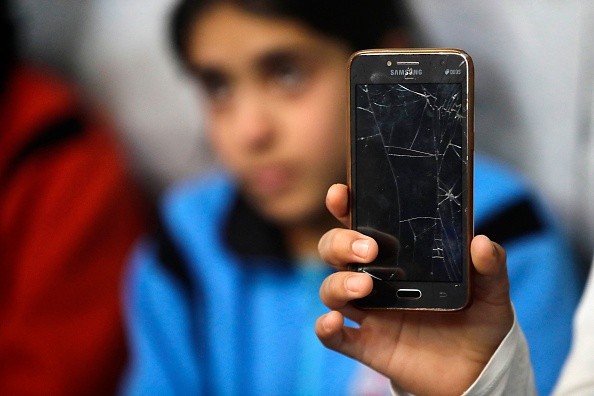Unbreakable screens with stunning images could likely reach some of your tech devices in the near future. It comes as a team of chemical scientists is already working on something like that.

Unbreakable Screens with Stunning Images
Smartphones, along with other devices that heavily rely on screens, like smart TVs and laptops, have massively upgraded most of their features, including more vivid images and smaller pixels.
However, their screens remain susceptible to shattering after accidental drops. But to be fair, smartphone screens have greatly improved as the top flagship devices now flaunt a sturdier glass display. Nevertheless, it is still far from shatterproof.

But these chemical engineers are looking into changing the landscape of the screens on these devices as they work on a material that still makes the image clear, but the build is more durable than ever.
Could these be the end of screen protectors?
Chemical Engineers Work on Unbreakable Screens
As per the report by ScienceAlert, some chemical engineers from the University of Queensland in Australia are developing a screen made of lead halide perovskite or LHP.
Australia-based engineers are attempting to pair durability with display clarity with the said version of the screen that uses nanocrystal-based material.
Although this material is nothing new, it does not appear on consumer products as it has the potential to leak out toxic chemicals, such as metal ions, making it dangerous to include in everyday devices.
However, the latest research proved that there is a solution to the said problem of LHP.
Nanocrystal and Glass
One of the chemical engineers in the research from the University of Queensland, Jingwei Hou, said that their team "have developed a process to warp or bind nanocrystals in porous glass."
That said, the team behind the study realized that to make nanocrystal consumer-friendly, they should stuff it in a glass. In turn, any toxic leakage is no longer an issue.
Hou went on to claim that "this process is key to stabilizing the material." Not just that, it also helps inhibit "the toxic lead ion from leaching out from the materials."
The first finished prototype of the durable screen provided impressive results during its early tests. The study showed that the prototype could withstand heat, light, humidity, and air.
What's more, the screen prototype also did not disappoint in its water immersion test that lasted for a long 10,000 hours. The study showed that it still retained its luminescence by 80 percent after being soaked in water.
Nevertheless, it is worth noting that unbreakable screens are not expected to show up in the next flagship offering of giant phone makers like Apple and Samsung.
However, the integration of glass to the nanocrystal tech is a huge step forward for a durable yet clear type of screen.
Related Article : Apple's 'Repair Trap' On iPhone 13 Screen Replacements Have Finally Been Identified
This article is owned by Tech Times
Written by Teejay Boris
![Apple Watch Series 10 [GPS 42mm]](https://d.techtimes.com/en/full/453899/apple-watch-series-10-gps-42mm.jpg?w=184&h=103&f=9fb3c2ea2db928c663d1d2eadbcb3e52)



